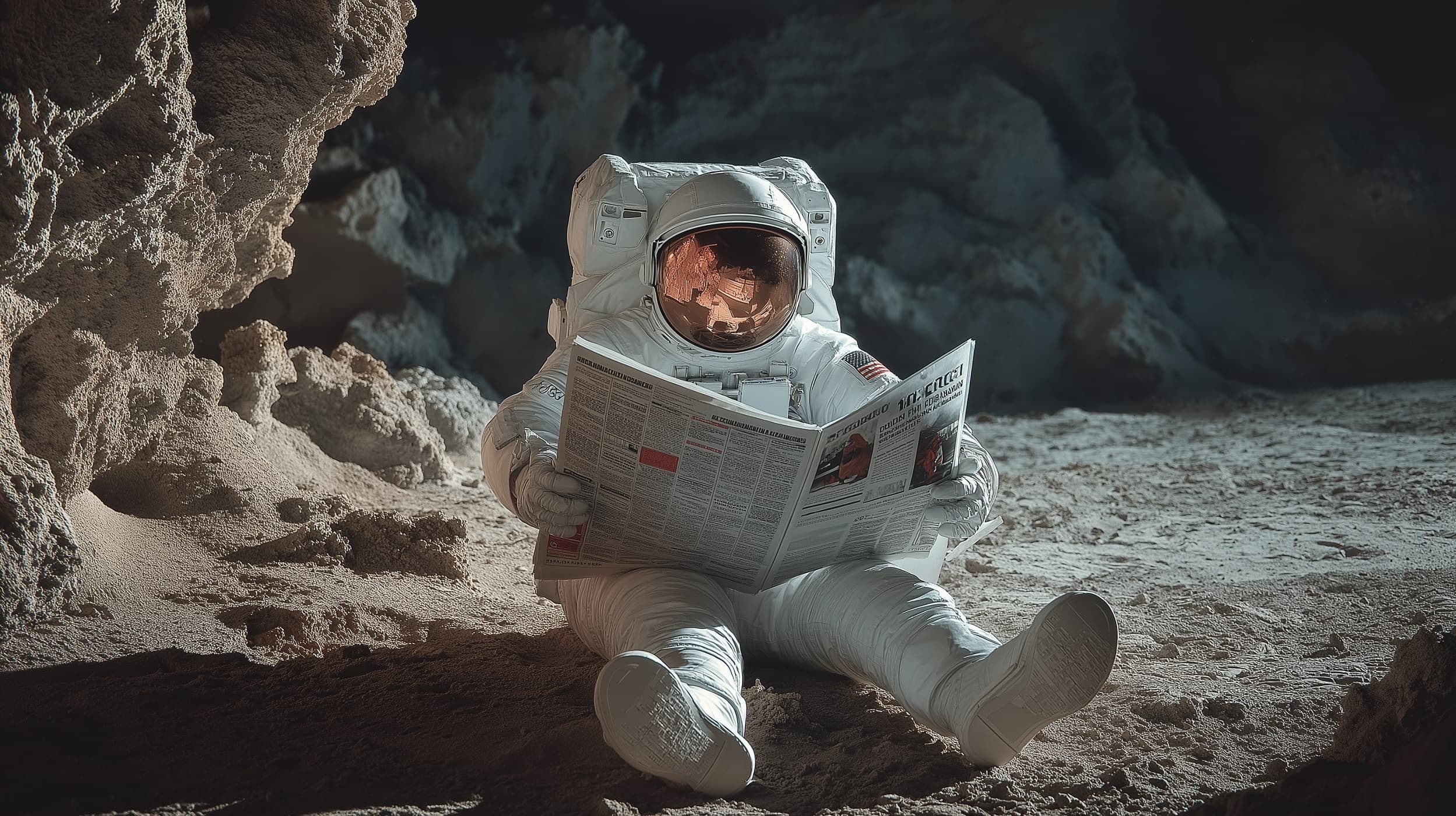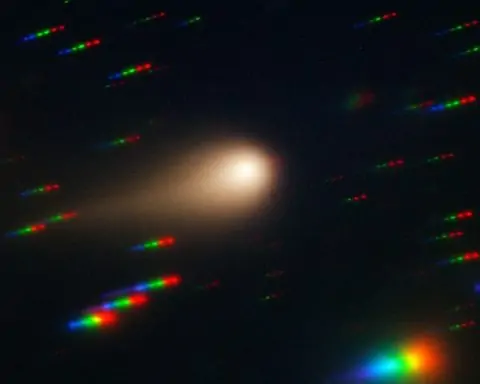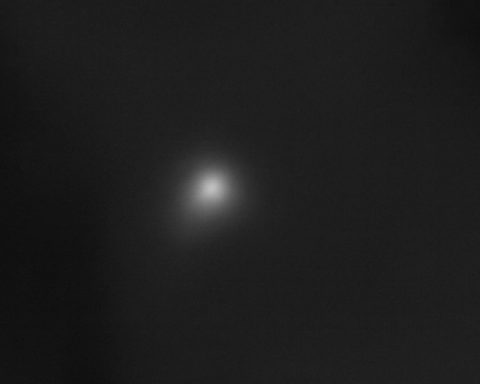- On July 25, 2025, Russia’s Roscosmos launched a Soyuz-2.1b from Vostochny with two Ionosfera-M satellites into polar orbit as part of the Ionozond program, and deployed 18 secondary payloads (17 Russian CubeSats and Iran’s Nahid-2).
- Europe’s Vega-C rocket lifted off from Kourou on July 25, 2025, delivering MicroCarb and four CO3D satellites into orbit, with MicroCarb mapping global CO₂ sources and sinks to within 1 ppm accuracy and CO3D producing ~50 cm land-surface resolution.
- SpaceX launched 28 Starlink satellites on a Falcon 9 booster (tail number B1078) from Cape Canaveral on July 26, 2025, marking the booster’s 22nd mission and the 91st Falcon 9 flight of 2025, with a droneship landing attempt.
- Starlink suffered a global outage on July 24, 2025, affecting tens of thousands of users for about 2.5 hours due to an internal software failure in Starlink’s core network services, later fully restored by ~8 p.m. EDT.
- Starlink surpassed 8,000 satellites in orbit and reportedly serves more than 6 million users across roughly 140 countries by July 25–26, 2025.
- Amazon announced a $139.5 million investment in Florida facilities to support Kuiper, including a 100,000 square foot payload processing site that began operation in April and a plan to deploy 3,236 satellites with throughput of 100+ satellites per month and up to three parallel launch campaigns.
- Senegal became the 56th Artemis Accords signatory on July 24, 2025, at a NASA ceremony in Washington, D.C., with NASA praising the expanded international cooperation in lunar exploration.
- ISRO announced that the NASA-ISRO NISAR mission will launch on a GSLV Mk II on July 30, 2025, reflecting India’s expanded commercial and collaboration-driven space program.
- China’s Tianzhou-9 cargo freighter docked with the Tiangong space station on July 14, 2025, delivering 6.5 metric tons of cargo and two Feitian spacesuits for EVA, plus a 130 kg core module exercise device.
- NASA’s TRACERS mission, consisting of twin small satellites, launched on a Falcon 9 on July 23, 2025, and began commissioning in Earth orbit to study solar wind-triggered magnetic reconnection in the northern cusp.
New Launches and Mission Milestones
Russia and Europe – Science Satellites to Orbit: On July 25, Russia’s Roscosmos successfully launched a Soyuz-2.1b rocket from Vostochny Cosmodrome, carrying two Ionosfera-M research satellites into polar orbit [1]. The mission, part of Russia’s “Ionozond” program, completed a constellation to monitor ionospheric space weather effects on Earth’s environment [2] [3]. The Soyuz also deployed 18 secondary payloads – 17 Russian CubeSats and Iran’s Nahid-2 telecom satellite – in a rare rideshare that highlights growing international partnerships in orbit [4] [5]. Just hours later, Europe marked a Vega-C rocket success: at 10:03 p.m. ET on July 25 (0203 GMT July 26), Vega-C lifted off from Kourou, French Guiana, delivering MicroCarb and four CO3D Earth observation satellites into orbit [6] [7]. MicroCarb, led by CNES (France), will precisely map global CO₂ sources and sinks to within 1 ppm accuracy, aiding climate science [8]. The quartet of CO3D satellites, built by Airbus, will generate high-resolution 3D maps of Earth’s land surfaces, imaging in multiple visible and infrared bands at ~50 cm resolution [9]. Arianespace confirmed all five satellites were deployed successfully, marking Vega-C’s return to form after past setbacks [10].
United States – Starlink Mission and Record Reuse: In the U.S., SpaceX readied a Falcon 9 launch from Cape Canaveral in the pre-dawn of July 26, carrying 28 Starlink internet satellites to low Earth orbit [11]. Liftoff was targeted for 5:01 a.m. EDT (0901 UTC), on what is already the 91st Falcon 9 flight of 2025 – a testament to SpaceX’s rapid cadence [12]. The booster (tail number B1078) flew its 22nd mission on this flight, previously supporting a Crew Dragon launch and numerous Starlink batches [13]. SpaceX planned another droneship landing attempt, which if successful would extend its streak of 480 booster recoveries to date [14]. This Starlink Group 10-26 launch comes on the heels of a challenging week for the constellation (detailed below), but also fresh achievements: just days ago, Starlink surpassed 8,000 satellites in orbit after a July 19 launch, and telecom partner T-Mobile announced rollout of “T-Satellite” direct-to-cell service via Starlink for users across the U.S., even including other carriers’ customers [15]. SpaceX’s relentless launch tempo continued unhindered into the weekend.
Upcoming and International Launches: The global launch schedule remains packed beyond July 26. Later on July 26, Arianespace plans another Vega-C mission to deploy climate-monitoring satellites (CO3D & MicroCarb) as described, and Australia’s startup Gilmour Space Technologies is slated to conduct the maiden launch of its Eris-1 rocket in a bold bid to reach orbit from Queensland (Bowen Spaceport) [16]. This would mark Australia’s first homegrown orbital launch attempt, carrying commercial payloads and validating Gilmour’s hybrid propulsion small launcher. Looking ahead, SpaceX has yet another Falcon 9 Starlink flight queued from California on July 27 [17], while China’s CASC will launch a Long March 6A that same day from Taiyuan [18]. Notably, India’s ISRO is preparing a major launch on July 30: the NISAR Earth-observation mission (a joint NASA-ISRO Synthetic Aperture Radar) on a GSLV Mk II rocket [19]. NISAR will map Earth’s land and ice dynamics in unprecedented detail. According to ISRO Chairman Dr. V. Narayanan, NISAR is one of 12 missions planned this year, as ISRO pushes to triple its satellite fleet from 55 to ~150 within three years to meet soaring domestic demand [20] [21]. He announced that India’s next-generation projects – from a domestic space station module in 2028 to the first crewed Gaganyaan launch by 2027 – are on track, reflecting India’s rapid expansion in space [22]. In Narayanan’s words, with currently 55 satellites serving the nation, “in the next three years, that number has to become nearly three times,” underscoring India’s ambition to match global space infrastructure by 2040 [23] [24].
Human Spaceflight and Space Station Updates
ISS Crew Rotation and Cargo: On the International Space Station, astronauts continued regular duties while gearing up for crew rotations. NASA announced that Crew-11, a SpaceX Dragon mission with four astronauts, remains scheduled to launch July 31 from Florida [25]. Meanwhile, the four Crew-10 astronauts currently aboard the ISS held a live press conference on July 25 from orbit, discussing their mission highlights and preparations to return home after over five months aloft [26]. Russia also recently resupplied the ISS: the Progress 92 cargo ship launched July 3 carrying ~3 tons of food, fuel, and experiments, which docked to the Zvezda module to replenish the station [27]. (Progress 92 replaced Progress 90, which had departed after a six-month stay [28].) These routine but vital flights keep the ISS stocked as the crew conducts research ranging from biomedical studies to technology demos in microgravity.
China’s Tiangong Space Station: In China’s orbiting Tiangong station, a new cargo freighter arrived to support its three-person crew. The Tianzhou-9 supply ship launched on July 14 and docked just hours later to Tiangong’s Tianhe core module, delivering a hefty 6.5 metric tons of cargo [29]. Aboard were fresh food, scientific experiments, and even upgraded hardware for long-duration missions. Significantly, Tianzhou-9 brought two next-generation Feitian spacesuits for extravehicular activity, featuring greater durability and lifespan, as well as a 130 kg “core module” exercise device to help astronauts maintain muscle conditioning [30] [31]. “The stronger [our astronauts are], the longer and farther we can go. Core strength is crucial not only for space station operations but also for future missions to the moon,” noted Li Yinghui, a researcher at the China Astronaut Center [32]. This emphasis on astronaut fitness ties into China’s Moon aspirations – exercise gear delivered now serves a dual purpose of keeping crews healthy in low Earth orbit and preparing them for the rigors of lunar gravity in upcoming Chinese lunar missions. Tianzhou-9 also carried biomedical experiments (such as stem cells to study bone loss and cardiac cells for microgravity health research) and other tech demos [33]. With the Shenzhou-20 astronaut trio aboard since April, Tiangong is entering its third year of occupancy. China plans to launch Shenzhou-21 in October to relieve the crew [34], and the success of Tianzhou-9 ensures the station is well-stocked for the handover. (In a related human spaceflight milestone, Blue Origin completed its 12th crewed suborbital flight on May 31, flying six tourists – including the first New Zealander in space – on a New Shepard rocket above the Kármán line [35] [36]. Although outside this two-day window, it highlights the ongoing pace of private human spaceflight missions in 2025 alongside orbital endeavors.)
Satellite Constellations and Communications
Starlink Global Outage and Recovery: SpaceX’s Starlink internet constellation suffered an unprecedented global outage on July 24, drawing intense attention to satellite network resilience. Users across the U.S. and Europe lost connectivity starting around 3 p.m. EDT, with over 60,000 outage reports logged within hours [37] [38]. Even Ukraine’s military – heavily reliant on Starlink for frontline communications – saw service go down “across the entire front” during the blackout, according to a Ukrainian drone unit commander [39]. Starlink engineers worked feverishly, restoring most service after about 2.5 hours and fully resolving the network issue by ~8 p.m. EDT that evening [40] [41]. SpaceX officials confirmed the cause was an internal software failure in Starlink’s “core network” services, not an external attack [42]. “The outage was due to failure of key internal software services… we apologize for the disruption and will fully root-cause this issue to ensure it does not occur again,” wrote Michael Nicolls, SpaceX’s VP of Starlink Engineering [43]. Elon Musk also issued a public apology on X. Outside experts noted the rarity of such a widespread Starlink failure. “This is likely the longest outage ever for Starlink, at least since it became a major service provider,” observed Doug Madory, an internet analysis firm director [44]. The incident – albeit resolved the same day – has sparked discussions about cybersecurity and redundancy in satellite broadband. Analysts have speculated whether a buggy software update or configuration error was to blame, and governments are eyeing the implications of heavy dependence on Starlink for critical infrastructure [45]. Despite the hiccup, SpaceX’s rapid launch schedule (as noted, a new Starlink batch launched July 26) is quickly adding capacity and upgrades. Starlink now serves about 6+ million users in ~140 countries, and SpaceX has been rolling out higher-bandwidth “V2 Mini” satellites to meet growing demand [46] [47]. The network’s first global outage will likely lead to lessons learned and software hardening as SpaceX balances aggressive innovation with reliability for its ubiquitous satellite internet service.
Kuiper Constellation Ramps Up: Amazon’s rival megaconstellation, Project Kuiper, is also accelerating toward global broadband coverage. The company revealed on July 24 that it invested $139.5 million in new facilities on Florida’s Space Coast to support a high launch tempo for Kuiper’s planned 3,236 satellites [48] [49]. Amazon’s 100,000 sq ft payload processing facility at Kennedy Space Center became operational in April, just in time to fuel and integrate the first Kuiper satellites launched on ULA and SpaceX rockets this spring [50] [51]. “There is no better place than Florida’s Space Coast to fulfill Kuiper’s promise to bring broadband to unserved and underserved [communities] across the nation and world,” said Brian Huseman, Amazon’s VP of public policy, highlighting the local investments and partnerships with NASA, Space Force, and Space Florida [52]. In the past three months, Amazon executed three Kuiper launches (including one on July 16 via Falcon 9 with 24 satellites) and is “continuing to pick up the pace” toward an initial service rollout [53] [54]. A second, 42,000 sq ft processing site is under construction to boost throughput by year’s end [55]. At full capacity, Amazon’s Florida facilities will be able to prepare 100+ satellites per month and support up to three parallel launch campaigns [56] [57] – a capability needed to deploy Kuiper’s first-generation constellation quickly. The company has over 80 launches booked across ULA’s Vulcan and Atlas V, Blue Origin’s New Glenn, and SpaceX Falcon 9 vehicles [58]. With five satellites per day manufacturing rates touted at its Seattle factory (at peak output) [59], Amazon is aiming to catch up to SpaceX’s constellation. The push for scale comes as Kuiper’s first prototype sats proved out technologies in late 2023, and the first operational batches are now in orbit validating performance [60]. Industry observers note that having multiple broadband constellations (Starlink, Kuiper, OneWeb, etc.) could improve global coverage resiliency – though it also raises concerns about orbital traffic management as thousands of new satellites populate low Earth orbit.
Other Satellite Network Updates: In related news, Spire Global – a company operating a fleet of RF-monitoring smallsats – debuted a suite of AI-enhanced intelligence products for defense customers on July 24 [61]. Spire’s satellites eavesdrop on radio emissions (from ship transponders, weather systems, etc.), and the new products use artificial intelligence to turn this raw data into strategic insights for military and security applications [62]. This move reflects a broader trend of satellite operators offering “analysis-as-a-service” to governments, leveraging onboard and cloud-based AI to detect patterns like illicit maritime activity or jamming attempts. In the communications sphere, OneWeb (now merged with Eutelsat) neared completion of its own broadband constellation and is in early service; no major OneWeb developments were reported on July 25–26, but the firm is gradually expanding service regions and planning second-generation satellites with higher speeds and perhaps laser links to stay competitive. And in satellite navigation news, Europe’s Galileo and China’s BeiDou systems both passed milestones in 2025 (Galileo began upgrading to new Block III satellites, and BeiDou announced an enhancement plan), though these did not coincide with the two-day window of this roundup.
Advances in Space Technology and Industry
Blue Origin’s AI-Powered Space Surveillance: Blue Origin, known for its rockets, made headlines with a satellite venture announcement on July 25. The company will fly an AI-driven “Owl” space surveillance sensor for Scout Space on the first operational mission of Blue Origin’s new Blue Ring spacecraft bus [63] [64]. Blue Ring is a modular satellite platform (and space tug) capable of hosting multiple payloads (up to 4,000 kg) and maneuvering between orbits or even to the Moon and Mars [65] [66]. It had a pathfinder test launch on the inaugural New Glenn rocket in January 2025, which reached orbit to validate the vehicle’s systems [67]. Now Blue Origin is targeting spring 2026 for Blue Ring’s first operational flight – and Scout’s Owl sensor will be the primary payload, headed to geostationary orbit [68] [69]. The Owl sensor is designed for space domain awareness (SDA): it will use optical systems and onboard artificial intelligence to autonomously detect, track, and characterize objects in orbit – from active satellites to debris – and flag any potential threats or anomalies in GEO [70]. By performing automated tracking from space, Owl aims to augment ground-based radars and telescopes in monitoring the critical GEO belt for both national security and commercial satellite operators. Blue Origin sees this as a pathfinder for offering in-space services. “Integrating Scout’s Owl sensor on this first mission marks a significant step forward in advancing SDA capabilities and underscores our commitment to supporting the nation’s mission requirements,” said Paul Ebertz, senior VP of Blue Origin’s In-Space Systems, in a statement [71]. The announcement illustrates how AI capabilities on satellites are growing – moving toward spacecraft that can make decisions on-orbit (what to observe, when to maneuver, etc.) without waiting for ground commands. It also expands Blue Origin’s portfolio beyond launch and lunar landers into operating complex multi-payload spacecraft, a sign of the maturing space services market.
ISRO’s Ambitious Roadmap: India’s ISRO is also embracing new technologies and an expanded mandate as it transforms from a purely government service provider into a more commercial, innovation-driven agency [72]. In his July 25 lecture, Chairman Dr. Narayanan highlighted indigenous development of advanced propulsion (electric propulsion for satellites, planned nuclear propulsion concepts, air-breathing scramjet engines, and reusable launch vehicle tech) [73]. He confirmed India’s success in a recent SPADEX orbital docking experiment and noted a record of 433 foreign satellites launched over the past decade, showcasing India as a reliable launch provider [74] [75]. ISRO’s upcoming missions include a jointly developed Chandrayaan-5 / Lunar Polar Exploration (LUPEX) rover with Japan – a much larger (~6,600 kg) lander-rover combo slated for later this decade, which will use a Japanese H3 rocket [76]. Missions to Venus (Shukrayaan orbiter) and a Mars orbiter are in planning, alongside a deep-sea submersible project (Samudrayaan) as ISRO broadens its scientific scope [77]. India’s space sector reforms are attracting private startups in launch and satellite manufacturing, and ISRO is positioning itself to both compete and collaborate commercially. For instance, coming up shortly on July 30, the NASA-ISRO NISAR mission will demonstrate a new L- and S-band radar satellite built in partnership with the U.S. – the kind of international collaboration ISRO is actively pursuing [78]. The period of July 25–26 saw ISRO not launching rockets but launching ideas – signaling that the agency’s future involves higher launch capacity, human spaceflight, and cutting-edge tech development to keep pace in the new space race.
Military Space and Cybersecurity: In the defense realm, the U.S. Space Force enacted an organizational change on July 24 to speed up tech development. Its Space Systems Command (SSC) created two new “System Delta” units to guide programs in (a) missile-warning satellites and (b) space-based surveillance & targeting assets [79]. This restructuring groups acquisitions by mission area, aligning with how Space Force’s operational divisions are organized, and is meant to tighten the feedback loop between those who build space systems and those who use them [80]. It reflects the military’s push for agility in fielding next-gen Overhead Persistent IR sensors (for detecting missile launches) and targeting networks for global threats. The importance of resilience against cyber threats was underscored this week not just by the Starlink outage but also by broader initiatives: Industry groups are releasing new cybersecurity guidelines for satellite operators, and governments are formulating rules for space traffic management and satellite safety. The European Union, for example, proposed an EU Space Law in late June aiming to mandate collision avoidance and anti-interference measures for satellites [81]. Regulators worldwide are acknowledging that satellites have become critical infrastructure – whether for broadband, navigation, or reconnaissance – and thus require robust defenses against jamming, hacking, and orbital debris hazards. This two-day period saw no major cyberattacks or debris incidents, but stakeholders used the time to prepare: conferences like CyberSat 2025 convened experts on protecting satellite comms [82], and companies like Northrop Grumman and BAE Systems announced contracts to build more secure missile-warning sats and jam-resistant GPS alternatives [83]. As space systems integrate AI and connect with terrestrial networks, the intersection of space and cybersecurity is increasingly in focus.
Space Policy and International Cooperation
Artemis Accords – New Signatory: A notable diplomatic development came as Senegal signed the NASA-led Artemis Accords on July 24, becoming the 56th country to join this framework for responsible exploration of the Moon and beyond [84]. At a ceremony in Washington D.C., Senegal’s space agency chief Maram Kairé formalized the commitment alongside NASA officials. “Senegal’s adherence to the Artemis Accords reflects our commitment to a multilateral, responsible, and transparent approach to space,” Kairé said, calling the signature “a meaningful step in our space diplomacy and in our ambition to contribute to the peaceful exploration of outer space.” [85] Senegal’s entry is significant as it adds an African partner to the Accords, exemplifying the growing global coalition supporting NASA’s Artemis program for returning humans to the Moon. NASA’s acting Administrator Sean Duffy praised the expanding international buy-in – with over 50 nations now agreeing on principles like peaceful use, transparency, interoperability, and debris mitigation, the Accords are shaping norms even before Artemis III lands astronauts on the lunar surface. This week’s signing also followed a meeting between Senegal’s President and the U.S. President, indicating space cooperation is becoming part of broader diplomatic engagements [86]. In related policy news, NASA welcomed Senegal as a partner and separately announced new bilateral agreements: for instance, NASA and Brazil agreed to cooperate on Earth observation data sharing (leveraging Brazil’s Amazon monitoring satellites), and Canada detailed its contributions to Artemis (including a second AI-enabled robotic arm “Canadarm3” for the lunar Gateway station). While those were previously in discussion, the momentum of Artemis Accords this week highlights how lunar exploration is forging new alliances far beyond the traditional spacefaring nations.
Russia and China – Cooperation and Tensions: Absent from the Artemis club are Russia and China, who continue to pursue independent (and sometimes joint) endeavors. On July 25, Russian officials emphasized ongoing work with China on a planned International Lunar Research Station, an ambitious Moon base concept the two countries have invited others to join. However, concrete progress is slow, and Russia’s space budget constraints (exacerbated by sanctions and the Ukraine conflict) were evident in Roscosmos’s announcement that its Luna-26 orbiter mission might be delayed. Still, Russia demonstrated its ability to collaborate despite geopolitical tensions: the inclusion of Iran’s satellite on the Soyuz launch shows Russia’s willingness to partner with emerging space nations outside Western spheres [87]. (Iran hailed the launch of Nahid-2 on July 25 as a success and signaled interest in more joint projects.) China, for its part, used the success of Tianwen-2 (its asteroid sample mission launched in May) as proof of its deep-space prowess and invited the European Space Agency to participate in the mission’s science phase. Yet Western sanctions on high-tech exports to China remain a barrier, and U.S. law still prohibits NASA–China bilateral cooperation, limiting China’s international partnerships mainly to Russia and a few others. During this period, U.N. committees in Vienna continued deliberating norms for military space activities – no resolution this week, but discussions touched on avoiding misinterpretations (like distinguishing a repair satellite from an ASAT weapon) and whether to ban destructive anti-satellite tests. As space grows more crowded, July 25–26 saw not only technological feats but also these diplomatic and regulatory efforts aimed at keeping the cosmos cooperative and safe.
Space Weather Alerts and Scientific Discoveries
Geomagnetic Storm Watch: Space weather forecasters issued several alerts over July 25–26 due to solar activity earlier in the week. A G1 (Minor) geomagnetic storm watch is in effect for July 27, the result of a coronal mass ejection (CME) that erupted from the Sun on July 23 [88]. When this CME’s charged plasma cloud arrives at Earth, it may induce minor geomagnetic disturbances. Power grid fluctuations at high latitudes are possible, and auroras could dip farther south than usual – potentially visible in parts of Canada, the northern U.S., and northern Europe [89] [90]. As of July 25, Earth’s magnetic field was already unsettled, with a Kp 4 index warning (just below storm level) indicating auroras were sighted in Alaska and Scandinavia [91]. Satellite operators were alerted to heightened high-energy electron flux, which can cause extra charging of satellite surfaces and electronic components [92]. Fortunately, no major solar flares (R class radio blackouts) were detected in the past day – the 24-hour solar X-ray max stayed at R0 quiet levels [93]. The proton radiation environment was also calm (no solar radiation storms) [94]. In summary, the near-term space weather outlook was moderate: geomagnetic activity low to moderate, solar flare risk low, but a chance of a minor geomagnetic storm on July 27 as the CME arrives [95].
Solar Cycle Peak: These alerts come as the Sun approaches the predicted solar maximum of Cycle 25, expected right around July 2025. NASA and NOAA scientists have noted that sunspot counts are trending upward toward a peak this year [96]. Though Cycle 25 was originally forecast to be relatively weak (similar to the last cycle), it has surprised forecasters by slightly exceeding predictions in sunspot numbers. Even a “below-average” cycle can produce dangerous eruptions: “Just because it’s a below-average solar cycle doesn’t mean there is no risk of extreme space weather,” explains NOAA solar physicist Doug Biesecker [97]. The Sun’s influence is very real – so much so that NOAA’s Space Weather Prediction Center is staffed 24/7, 365 days a year [98]. Currently, multiple sunspot groups are crossing the solar disk, and at least one has complex magnetic fields that could produce an M-class or X-class flare. Teams are also watching for any new active regions rotating into view. Both NASA and Space Force are keenly interested in space weather because of its impact on technology and astronauts: NASA’s Artemis lunar program, for instance, is incorporating radiation monitors on the Gateway station to study and mitigate solar radiation hazards for crews [99]. This week saw NASA’s TRACERS mission (Tandem Reconnection and Cusp Electrodynamics Reconnaissance Satellites) – launched July 23 on a Falcon 9 – begin commissioning in Earth orbit [100]. TRACERS’ twin small satellites will orbit through Earth’s northern magnetic cusp region to study how the solar wind triggers magnetic reconnection, the process that can spark auroras and potentially degrade spacecraft electronics [101]. The data will help scientists better predict space weather effects by understanding how Earth’s magnetic shield and the Sun’s plasma environment interact. As one TRACERS researcher put it, this mission will “study Earth’s magnetic shield [and] how it protects our planet from the effects of space weather” [102] – knowledge that can improve forecasting models for events like the ones expected this weekend.
Astronomy and Exploration Findings: Beyond geomagnetism, these days brought other noteworthy space science news. Europe’s CHEOPS exoplanet telescope (launched 2019) revealed a peculiar star system where a planet’s orbit is causing its host star to emit “heartbeat”-like flares – a discovery announced July 25 that challenges models of star-planet magnetic interaction [103]. In planetary science, NASA’s Perseverance rover continued its work on Mars, quietly surpassing 20 rock samples cached for a future return mission, while the retired InSight lander’s data was re-analyzed to yield a precise measurement of Mars’ core radius (published on July 25 in Nature). Meanwhile, Japan’s space agency JAXA reported that its SLIM lunar lander (launched late 2023) is on track for a lunar orbit insertion in August – an encouraging sign after several failed lunar landing attempts by various players last year. And in the realm of astrophysics, July 26 marked 30 years since the historic Comet Shoemaker–Levy 9 impacts on Jupiter; astronomers reminisced on how that 1994 event led to key improvements in understanding impact risks in our solar system. While those reflections are more “this week in history,” they underline how far space exploration has come and how events on cosmic scales can influence priorities (for instance, the DART asteroid deflection test in 2022 was a direct legacy of impact awareness raised in the 1990s).
Outlook
In just two days, the space sector saw a flurry of activity: launch pads firing from Siberia to South America, satellites buzzing in orbit to advance climate research and global internet, and policy moves shaping the future of exploration. The period of July 25–26, 2025 encapsulated the breadth of modern space endeavors – commercial innovation, as SpaceX and Amazon expanded mega-constellations and Blue Origin pushed into space-based AI; international cooperation, from Senegal embracing lunar exploration accords to Russia and Iran teaming up on satellites; and ongoing scientific discovery about both our planet’s environment and the wider cosmos. It also served as a reminder of our reliance on space infrastructure, when a Starlink glitch briefly disconnected tens of thousands of users and frontline troops. Yet the quick recovery and Musk’s public contrition showed a maturing industry taking its responsibilities seriously [104] [105]. As solar activity rises toward its peak, stakeholders will remain vigilant to protect satellites and astronauts – indeed, the minor geomagnetic storm expected shortly will be a good systems test with auroras as a beautiful side effect [106] [107].
All told, these developments portray a space domain that is busier and more interconnected than ever. In the words of one ecstatic space tourist after her suborbital flight, “It was perfection… when I looked out at space and back down at the Earth, it was perfect” [108] [109]. While not every moment in space is perfect, the drive to explore and improve our use of the space environment was on full display through July 25–26, 2025. Each rocket launch, policy signature, or satellite deployed is another step for humanity – forging ahead, together, into the final frontier.
Sources:
- Spaceflight Now – Launch coverage and industry news [110] [111] [112]
- Space.com – Launch reports, mission updates, and expert commentary [113] [114] [115] [116]
- NASA News Releases – Program announcements and international agreements [117] [118]
- NASASpaceflight.com – Technical details on launches and spacecraft [119] [120]
- Reuters – Starlink outage incident reporting [121] [122]
- Breaking Defense – Space Force reorganization and military space developments [123]
- New Indian Express – ISRO chairman’s speech outlining India’s space plans [124] [125]
- Keeptrack.space – Daily space brief with launch schedule and space weather alerts [126] [127]
- Additional sources include official agency statements (Roscosmos, CMSA), and expert analyses as cited above [128] [129].
References
1. www.nasaspaceflight.com, 2. www.space.com, 3. www.space.com, 4. www.nasaspaceflight.com, 5. www.space.com, 6. www.space.com, 7. www.space.com, 8. www.space.com, 9. www.space.com, 10. www.space.com, 11. spaceflightnow.com, 12. spaceflightnow.com, 13. spaceflightnow.com, 14. spaceflightnow.com, 15. spaceflightnow.com, 16. keeptrack.space, 17. keeptrack.space, 18. keeptrack.space, 19. keeptrack.space, 20. www.newindianexpress.com, 21. www.newindianexpress.com, 22. www.newindianexpress.com, 23. www.newindianexpress.com, 24. www.newindianexpress.com, 25. www.nasa.gov, 26. www.nasa.gov, 27. www.space.com, 28. www.space.com, 29. www.space.com, 30. www.space.com, 31. www.space.com, 32. www.space.com, 33. www.space.com, 34. www.space.com, 35. www.space.com, 36. www.space.com, 37. www.reuters.com, 38. www.reuters.com, 39. www.reuters.com, 40. www.reuters.com, 41. www.reuters.com, 42. www.reuters.com, 43. www.reuters.com, 44. www.reuters.com, 45. www.reuters.com, 46. www.reuters.com, 47. www.reuters.com, 48. spaceflightnow.com, 49. spaceflightnow.com, 50. spaceflightnow.com, 51. spaceflightnow.com, 52. spaceflightnow.com, 53. spaceflightnow.com, 54. spaceflightnow.com, 55. spaceflightnow.com, 56. spaceflightnow.com, 57. spaceflightnow.com, 58. spaceflightnow.com, 59. spaceflightnow.com, 60. spaceflightnow.com, 61. spacenews.com, 62. spacenews.com, 63. www.space.com, 64. www.space.com, 65. www.space.com, 66. www.space.com, 67. www.space.com, 68. www.space.com, 69. www.space.com, 70. www.space.com, 71. www.space.com, 72. www.newindianexpress.com, 73. www.newindianexpress.com, 74. www.newindianexpress.com, 75. www.newindianexpress.com, 76. www.newindianexpress.com, 77. www.newindianexpress.com, 78. www.newindianexpress.com, 79. breakingdefense.com, 80. breakingdefense.com, 81. www.cooley.com, 82. www.cybersatsummit.com, 83. defensescoop.com, 84. www.nasa.gov, 85. www.nasa.gov, 86. www.nasa.gov, 87. www.nasaspaceflight.com, 88. keeptrack.space, 89. keeptrack.space, 90. keeptrack.space, 91. keeptrack.space, 92. keeptrack.space, 93. keeptrack.space, 94. keeptrack.space, 95. keeptrack.space, 96. www.nasa.gov, 97. www.nasa.gov, 98. www.nasa.gov, 99. www.nasa.gov, 100. www.nasa.gov, 101. www.nasa.gov, 102. www.nasa.gov, 103. www.nasaspaceflight.com, 104. www.reuters.com, 105. www.reuters.com, 106. keeptrack.space, 107. keeptrack.space, 108. www.space.com, 109. www.space.com, 110. spaceflightnow.com, 111. spaceflightnow.com, 112. spaceflightnow.com, 113. www.space.com, 114. www.space.com, 115. www.space.com, 116. www.space.com, 117. www.nasa.gov, 118. www.nasa.gov, 119. www.nasaspaceflight.com, 120. www.nasaspaceflight.com, 121. www.reuters.com, 122. www.reuters.com, 123. breakingdefense.com, 124. www.newindianexpress.com, 125. www.newindianexpress.com, 126. keeptrack.space, 127. keeptrack.space, 128. www.space.com, 129. www.reuters.com










